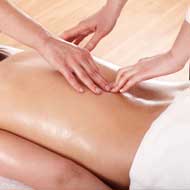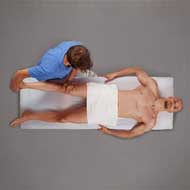Your Helpful Guide To Oriental Massage
Oriental massages have been in existence since 722 BC and was used actively in ancient Chinese medicine. Different types of massages have evolved continuously for the last 5000 years in China.
There has been evidence of the use of massage techniques in other ancient civilizations as well.
Oriental massages make use of two important principles which are the Yin and Yang and Chi. Let us delve into the world of oriental massages and its healing techniques.
Energy Pathways
Oriental therapies revolve around the belief that the entire body is made of energy pathways or meridian lines. Through which the energy of chi flows. Effective functioning of these pathways and flow of energy results in the optimum use of the immune system. If the flow is obstructed or becomes sluggish, pain and illness becomes inevitable. Oriental massages involve rubbing and stretching to help open up these energy passage ways to direct the flow of energy appropriately.
Energy pressure points
Along with the pathways, key focal points, also known as acupoints are also very important. Manipulating these energy points helps in stimulating energy flow and keeps it moving in the right direction. Making use of the thumbs, by digging it gently into the specific points and moving in circular, small movements, energy is dispersed to allow it to flow freely along the meridian energy lines.
Masseuse Energy Control
Apart from the thumbs, oriental massage therapists also make use of other different parts of their body to optimize and manipulate energy flow. It is also strongly advised that when massaging, the masseuse remain calm, composed and peaceful. According to oriental massages, energies can also be transferred and interfere in the process of healing.
Wearing Comfortable Clothing
Oriental massages depending on the type and the origin, usually involve the client lying on the floor on a mat or a massage table. Massage therapists should wear loose and comfortable clothing during the massage to allow for more flexibility. Traditionally, a loose cotton pant is worn under a comfortable shirt with short sleeves.
Different oriental massages call for different kinds of healing, some of these massages are:
- An Mo - is a massage for general relaxation. ‘An’ means press and ‘Mo’ means rub. By pressing and rubbing on specific points of the body, muscles are gently relaxed. The massage can be used either for deep or gentle relaxation depending mainly on the strength and the direction of the hand movements, and the application of power exerted on the body.
- Tui Na - is the modern and more medicinal form of the ancient An Mo. It is also makes the use of hands and pressure on specific focal energy points on the surface of the body, to stimulate internal healing of the body. It also opens up energy channels to ensure unobstructed flow of Chi.
- Wai Qi Liao Fa - is different from traditional Chinese massages as it stimulates healing by using external auric energies. The massage is conducted without touching the client, rather by projecting Chi or energy from a distance of 10 to 100 cm.
- Shiatsu - is a Japanese form of massage therapy that uses the same concept of energy channels and flow. It makes use of firm yet gentle pressure in an orderly and light manner to direct and release energy flow.
- Thai massages - uses a combination of yoga stretches and acupoints. Massage therapists incorporate deep stretching, gentle rocking and rhythmic compression to open up the energy channels and increase energy flow throughout the body.
Massages are not used to relax, rejuvenate, and relieve pain but also to promote general well-being. It involves balancing the body on physical, emotional and mental levels. It is important to consult with a doctor before trying out any massages.



